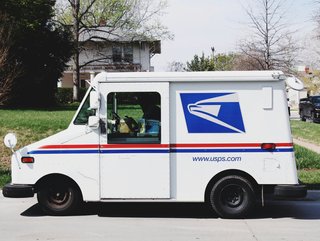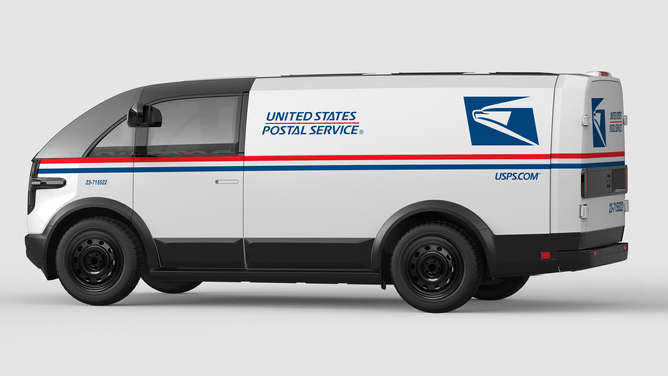How Will US Postal Service Meet New Sustainability Targets?

Aggressive. That’s how Postmaster General Louis DeJoy described the new sustainability targets for 2030 from the United States Postal Service (USPS).
The state-owned agency has announced a series of sweeping goals – to slash carbon emissions from fuel and electricity by 40% and reduce emissions from contracted services by 20%.
While circular economy goals include diverting 75% of waste from landfills, increasing recycled content of packaging to 74%, increasing package recyclability to 88%, and increasing renewable energy use to 10%.
Achieving these goals would position USPS as “the most sustainable way to mail and ship”, according to DeJoy, who serves as Chair of the USPS Environmental Council.
Established in 2023, the USPS Environmental Council features a panel of four executives responsible for creating a long-term environmental strategy and overseeing the implementation of the environmental goals and objectives.
While other logistics providers such as 3PL Geodis have set equivalent targets – to cut Scope 1 and 2 by 42% and Scope 3 by 30%, by 2030 – USPS’s size and scale means that its cuts would potentially provide much greater benefits.
The postal service currently operates more than 31,000 post office locations in the US and delivers 128.8 billion pieces of mail annually.
Goals Align With PSCS's Financial Goals
Importantly, these ambitious new goals are meaningful too – in aligning with organisation’s 10-year financial sustainability and service excellence plan, Delivering for America – which targets a reduction in US$5 billion in operating costs while growing the business several billion dollars.
“As we transform our operating processes and invest in new automation, new technologies, and upgraded facilities and vehicles, we will generate significant efficiencies that reduce our costs, minimise waste across all functions of our operations and slash our carbon footprint.”
So how exactly does USPS plan to achieve these ‘aggressive’ goals?
Electrification and optimising delivery routes
Cutting greenhouse gas emissions by 40% is no mean feat – but is reachable according to USPS – with a strategy that focuses on three key areas: moving freight from air to ground transportation, optimising delivery routes for trucks and carriers, and further electrifying its fleet.
While additional reductions in carbon emissions are expected to come from “eliminating wasteful and unnecessary operating activities” – that means streamlining the service to modernise facilities, reorganising operating plans and adding new sortation equipment.
Having already introduced nation’s largest EV fleet over the last three years, this year will see USPS roll out at least 66,000 battery electric-powered delivery vehicles into its fleet.
Representing one of the largest commitments to vehicle electrification in the world, the organisation is spending around US$10 billion on its new fleet, as part of its US$40 billion investment strategy to upgrade and improve transportation, processing and delivery networks.
Among suppliers, leading high-tech mobility company, Canoo Inc. will deliver right-hand drive versions of its Lifestyle Delivery Vehicle 190, which leverages the company’s patented technologies to deliver enhanced functionality, safety, and ergonomics.
To facilitate the roll-out of EVs, USPS is also building a nationwide network of EV charging to rapidly deploy these emission-free vehicles. Just last month, in Atlanta, the postal service launched the first of tens of thousands of electric charging stations, which will ultimately be used to power zero-emission USPS delivery trucks.
Among other alternative modes of delivery, USPS has increased bike and foot routes – mail is delivered by bike on 51 routes in Arizona and Florida, while more than 6,500 carriers deliver mail solely on foot.

Circular Economy Goals and Climate Literacy
The USPS strategy to reduce carbon emissions extends to the circular economy too, with concrete plans to overhaul what it describes as “wasteful and unnecessary” operating activities.
Focus will be on diverting waste from landfills – 75% by 2030 – and through the sustainable acquisition of materials and increased spend on on-site renewable energy.
New packaging goals for 2030 include increasing the recycled content of packaging to 74%, increasing package recyclability to 88%.
When it comes to the circular economy and environmental commitments, USPS is already delivering. Here are some 2022 numbers:
- 52,000 pounds of small lead-acid and dry cell batteries recycled
- 370,00 gallons of used oil recycled
- 51 routes achieved on bicycle
Throughout its work to create a greener postal service, the organisation also plans to increase environmental education among its 640,000-strong workforce, local communities and partners.
Included in this will be the provision of on-site and online training and tools that align with policy and regulatory requirements to 100% of relevant USPS employees.






